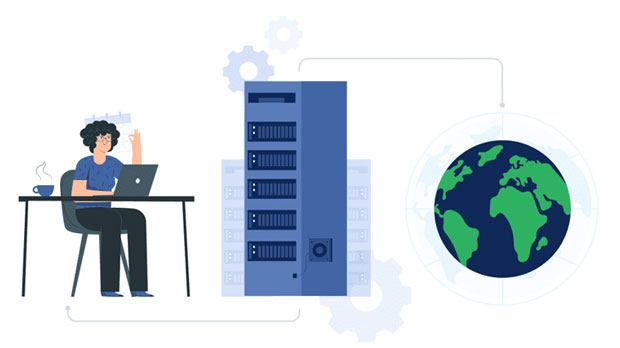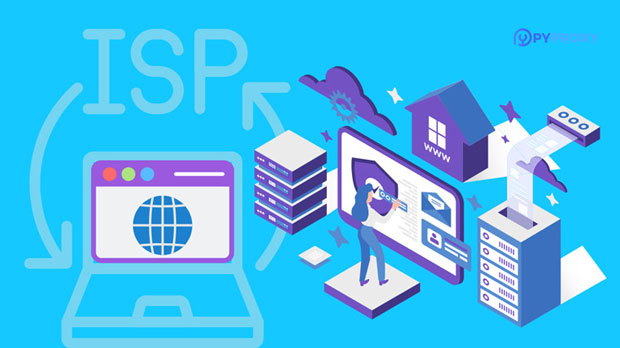When it comes to online privacy, security, and anonymity, many individuals and businesses turn to proxy servers. SOCKS5, the latest version of the SOCKS (Socket Secure) protocol, has gained popularity due to its enhanced features and flexibility. However, choosing the right socks5 proxy server can be a daunting task, as there are many factors to consider. Whether you are using SOCKS5 for personal browsing or business purposes, understanding the key features that define a high-quality proxy server is crucial for maximizing the benefits. In this article, we will explore the important criteria to consider when selecting the best socks5 proxy server, so you can make an informed decision based on your specific needs. 1. Understanding SOCKS5 Proxy ServersBefore diving into the selection process, it's essential to have a solid understanding of what SOCKS5 proxy servers are and how they function. A SOCKS5 proxy server works by acting as an intermediary between your device and the internet, routing your requests through a remote server. Unlike other proxy protocols, such as HTTP or HTTPS proxies, SOCKS5 is not limited to specific types of traffic, meaning it can handle any type of traffic, including HTTP, FTP, and P2P connections. Additionally, SOCKS5 supports authentication and encryption, making it a versatile option for secure browsing and online anonymity.2. Key Features to Consider When Choosing a SOCKS5 ProxyTo choose the best SOCKS5 proxy server, several important features need to be evaluated. These features directly impact the server's reliability, security, and overall performance.2.1 Speed and PerformanceOne of the most important factors to consider when selecting a SOCKS5 proxy server is speed. The proxy will affect your internet connection speed, so it's essential to choose a server that provides fast and reliable connections. A high-speed server will ensure that you experience minimal latency, which is crucial for activities such as streaming, gaming, or large file downloads. When testing speed, make sure to consider factors such as bandwidth, the server’s proximity to your location, and the overall load on the server. A proxy with a high-speed network and low server congestion will offer the best performance.2.2 Security and PrivacyPrivacy is a key consideration when choosing any proxy server, and SOCKS5 is no exception. socks5 proxies offer the advantage of not modifying your data traffic, which means they don't interfere with your browsing experience. However, the server itself should provide adequate encryption to protect your data from being intercepted or leaked. Look for a SOCKS5 proxy server that supports additional encryption options, such as SSL, or choose a provider that offers a higher level of security.Furthermore, ensure that the SOCKS5 proxy service does not log your data or browsing history. Some proxy providers may track your usage for marketing or other purposes, which could compromise your privacy. A good SOCKS5 proxy server should have a strict no-logs policy, meaning they do not store any records of your internet activity.2.3 Server Location and Geo-RestrictionsThe location of the SOCKS5 proxy server is also an important factor to consider. The closer the server is to your physical location, the better the performance will be, as latency is typically lower. However, if your goal is to bypass geo-restrictions or access content available in different regions, you may want to choose a proxy server located in a specific country or region. For example, if you are trying to access content that is restricted in your country, a SOCKS5 proxy server based in a different country can help you bypass these restrictions.Some SOCKS5 proxy providers offer servers in multiple countries, giving you the flexibility to switch between different locations. When choosing a provider, ensure that they offer a wide range of server locations to meet your specific needs.2.4 Reliability and UptimeA reliable SOCKS5 proxy server is one that ensures minimal downtime and consistently stable connections. Uptime is an important metric, as frequent outages can disrupt your internet activities. When selecting a SOCKS5 proxy provider, check reviews or independent sources for information on their server uptime and overall reliability. A good proxy service should have a high uptime rate, ideally over 99%.2.5 Cost and Subscription PlansPrice is always a consideration when selecting any service, and SOCKS5 proxies are no different. The cost of a SOCKS5 proxy server can vary depending on factors such as the quality of service, server locations, and additional features. However, it’s essential to avoid opting for the cheapest option, as low-cost proxies may come with limitations such as slower speeds, fewer server locations, or compromised security.Instead, look for a SOCKS5 proxy provider that offers a reasonable price for the quality of service they provide. Many providers offer different subscription plans, so choose one that fits your needs and budget. Some providers also offer free trials or money-back guarantees, allowing you to test the service before committing to a long-term plan.3. Advanced Features to Enhance Your ExperienceIn addition to the basic features mentioned above, there are several advanced features that can further enhance your SOCKS5 proxy experience. These features may not be essential for everyone, but they can provide added value for those with specific needs.3.1 IP Rotation and Unlimited ConnectionsSome SOCKS5 proxy services offer IP rotation, which automatically changes the IP address you're using every time you make a request. This feature is particularly useful for users who want to maintain a higher level of anonymity or bypass restrictions that may limit access to a specific IP address. Additionally, some providers allow you to use unlimited connections, which is ideal for businesses or power users who require multiple simultaneous connections.3.2 Support for Authentication and Advanced Security FeaturesAnother advanced feature to look for is support for authentication mechanisms, such as username and password protection, which adds an extra layer of security. Some SOCKS5 proxies also offer additional features such as DNS leak protection and WebRTC leak prevention, which help to protect your privacy and prevent your real identity from being exposed.4. Testing the SOCKS5 Proxy ServerBefore fully committing to a SOCKS5 proxy server, it’s a good idea to test it first. Many proxy providers offer free trials or money-back guarantees, so take advantage of these offers to assess the server’s performance, reliability, and features. Testing can help you identify potential issues, such as slow speeds, connectivity problems, or inadequate security measures, allowing you to make an informed decision.ConclusionSelecting the best SOCKS5 proxy server requires careful consideration of several key factors, including speed, security, server location, reliability, and cost. By evaluating these aspects and taking advantage of advanced features like IP rotation and enhanced authentication, you can choose a SOCKS5 proxy that meets your needs and ensures a secure, high-performance browsing experience. Always remember to test the service before committing, and choose a provider that offers the best balance between quality and price. With the right SOCKS5 proxy server, you can enjoy increased online privacy, secure browsing, and unrestricted access to global content.
Dec 26, 2024
![arrow]()



















































